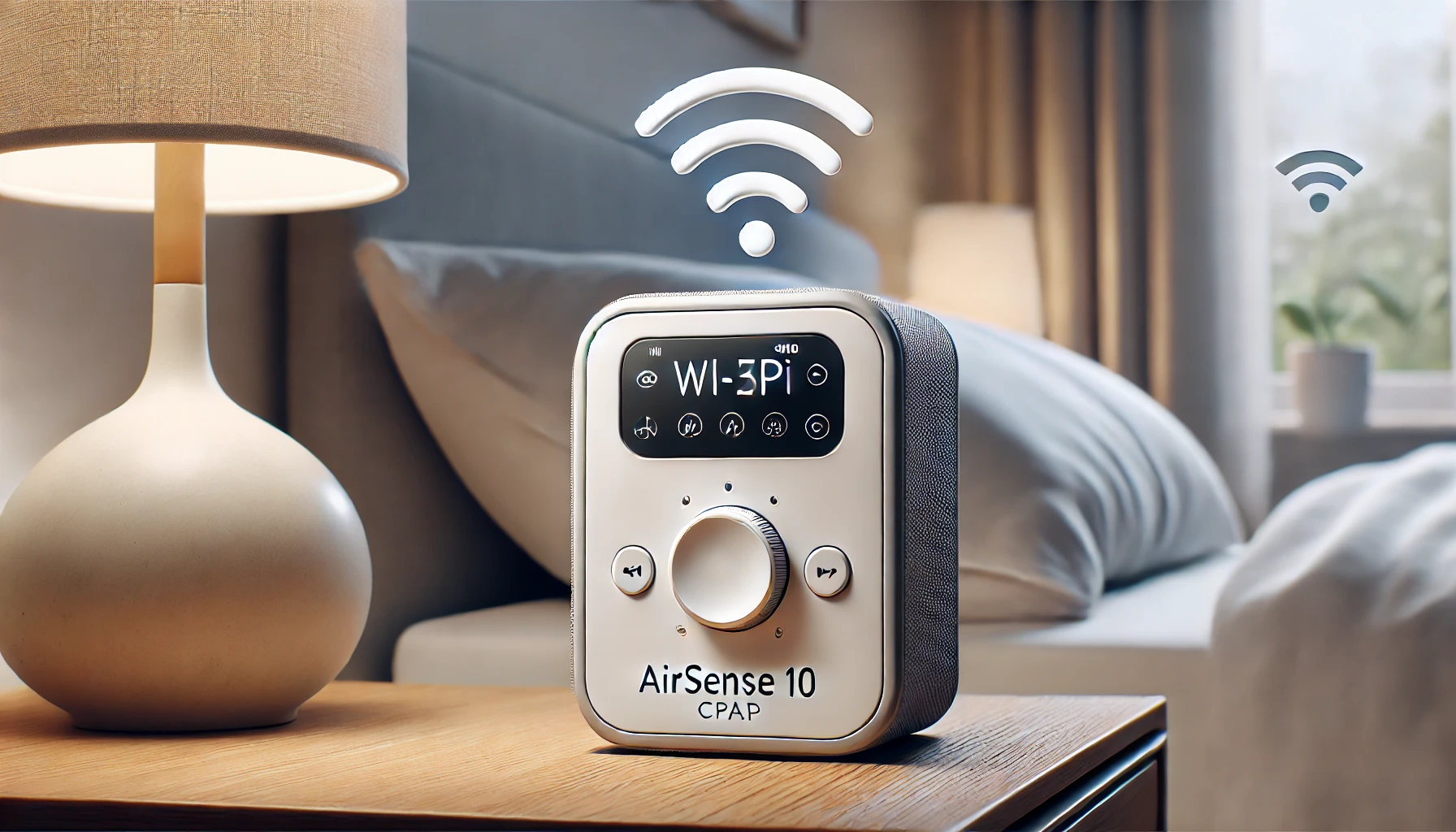The AirSense 10 is a cutting-edge CPAP device designed to provide effective therapy for individuals with sleep apnea. One of its standout features is its built-in Wi-Fi connectivity, which allows seamless data transmission to healthcare providers and apps for remote monitoring and therapy adjustments. This capability enhances the user experience and ensures timely and accurate tracking of sleep therapy progress. Understanding How Long Will AirSense 10 Send Wi-Fi Connection is essential for users aiming to maximize the device’s functionality and ensure uninterrupted communication with their care teams.
AirSense 10 Wi-Fi Connectivity Features
The AirSense 10 has advanced Wi-Fi capabilities, making it more than just a CPAP device—it’s a smart system designed for seamless therapy management. Its Wi-Fi functionality enables automatic data transfer to ResMed’s cloud platform, allowing healthcare providers to monitor therapy progress remotely and make necessary adjustments.
Key features of its Wi-Fi connectivity include:
- Remote Updates: Allows over-the-air firmware updates to optimize the device without requiring user intervention.
- Automatic Data Syncing: Each session’s data is uploaded to ensure real-time access for users and care teams.
- Compatibility with Apps: Works with ResMed’s myAir app, offering users detailed insights into their nightly therapy.
How Long Will AirSense 10 Send Wi-Fi Connection?
The AirSense 10 is designed to transmit data via Wi-Fi shortly after each therapy session ends. Typically, the device sends usage data and performance metrics within a few minutes after being powered off, provided it has a stable Wi-Fi connection.
Key Factors Affecting Wi-Fi Transmission Duration:
- Post-Session Data Upload: Data transmission generally occurs once per day after therapy. This ensures healthcare providers receive timely updates without continuous transmission.
- Device Power State: The AirSense 10 must remain plugged into a power source for the Wi-Fi module to function. If unplugged, transmission pauses until power is restored.
- Signal Strength and Connectivity: A stable Wi-Fi network is crucial for uninterrupted data transfer. Weak signals may delay or interrupt uploads.
- Firmware Configuration: Default settings prioritize periodic uploads, but manual adjustments can affect the frequency or timing of transmission.
Power and Usage Considerations
The AirSense 10’s Wi-Fi functionality is closely tied to its power and usage status, ensuring efficient operation while conserving energy. Understanding how power settings and usage patterns affect Wi-Fi connectivity is crucial for optimal performance.
1. Power Requirements for Wi-Fi
- Continuous Power Supply: The device must remain plugged into a power source for the Wi-Fi module to operate. If unplugged, the device will stop transmitting data until reconnected.
- Low Power Consumption: The AirSense 10 consumes minimal energy to maintain periodic data uploads even in standby mode.
2. Usage and Wi-Fi Activity
- Post-Therapy Uploads: The AirSense 10 primarily transmits data shortly after therapy sessions, focusing on efficiency by avoiding constant connectivity.
- Nightly Operation: During active use, Wi-Fi functionality remains dormant to prioritize therapy performance and minimize disruptions.
3. Battery Backup Implications
- Wi-Fi connectivity is suspended for users relying on external battery packs or during power outages unless the device is connected to a power source that supports network functions.
User Settings and Customization
The AirSense 10 allows users to manage Wi-Fi connectivity according to their needs. While the device is designed for seamless, automatic data transmission, certain settings allow customization to enhance user experience and troubleshoot connectivity issues.
1. Accessing Wi-Fi Settings
- Automatic Setup: The device’s Wi-Fi is typically pre-configured for connectivity, requiring minimal user intervention.
- Manual Configuration: Users can access the settings menu to check the Wi-Fi status or reconnect to a network if needed.
2. Troubleshooting Wi-Fi Connectivity
- Signal Strength Check: The device displays connectivity status, helping users identify weak signals or disconnections.
- Reset Option: A factory reset can resolve persistent Wi-Fi issues but should be used cautiously, as it resets all personalized settings.
3. Turning Off Wi-Fi
- Disabling Connectivity: Users concerned about privacy or who don’t require cloud uploads can disable Wi-Fi through the settings menu. However, this limits remote monitoring and therapy tracking.
Privacy and Data Security
The AirSense 10 is designed to protect user information with robust privacy and data security measures while ensuring seamless therapy monitoring. As a medical device, it adheres to strict compliance standards to safeguard sensitive health data.
1. Data Encryption
- All data transmitted via Wi-Fi is encrypted to prevent unauthorized access during uploads.
- Encryption ensures that information like therapy usage, breathing patterns, and compliance data remains secure.
2. Secure Cloud Storage
- Data is sent to ResMed’s secure cloud platform, which is stored and accessible only to authorized users, such as healthcare providers or users.
- For added assurance, the platform complies with healthcare data protection regulations, such as HIPAA (Health Insurance Portability and Accountability Act).
3. User Control Over Data
- Users can choose whether to enable Wi-Fi connectivity, giving them full control over when and how their data is shared.
- The device does not share personal data beyond therapy-related metrics unless authorized by the user.
4. Regular Updates
- Firmware updates ensure the latest security protocols are in place, protecting the device from potential vulnerabilities.
FAQs
What happens if my Wi-Fi signal is weak?
If the Wi-Fi signal weakens, the AirSense 10 may struggle to upload data in real time. The device will attempt to reconnect, but uploads could be delayed or interrupted. Consider relocating the device closer to the router or using a Wi-Fi extender to improve connectivity.
How do I reconnect if the device loses connection?
To reconnect, go to the Wi-Fi settings on the AirSense 10, select your network, and enter the password if prompted. If the connection issues persist, resetting the network settings may help.
Does the AirSense 10 work offline?
Yes, the AirSense 10 can operate without Wi-Fi. Therapy sessions can be completed offline, and the device will store the data locally. Once a stable Wi-Fi connection is restored, the data will automatically upload to the cloud.
Can I disable the Wi-Fi connection?
You can disable the Wi-Fi feature through the device’s settings menu. This will stop the device from uploading data and prevent healthcare providers from remotely monitoring it.
How often does the AirSense 10 transmit data?
The device transmits data primarily after each therapy session. This usually occurs once a day once the device is powered off and has a stable Wi-Fi connection. It ensures the healthcare team stays informed without requiring continuous uploads.
Conclusion
The AirSense 10 combines advanced Wi-Fi capabilities with user-friendly features, offering an innovative approach to managing sleep therapy. Its seamless data transmission ensures that healthcare providers can remotely monitor and adjust treatment, optimizing user outcomes. While the device is designed for automatic uploads, users can customize Wi-Fi settings and manage power usage to suit their preferences. With strong data encryption and secure cloud storage, the AirSense 10 upholds high privacy and security standards, ensuring that sensitive health information remains protected. Ultimately, the AirSense 10’s Wi-Fi functionality enhances the user experience, making therapy more convenient, efficient, and secure.




One thought on “How Long Will AirSense 10 Send Wi-Fi Connection?”